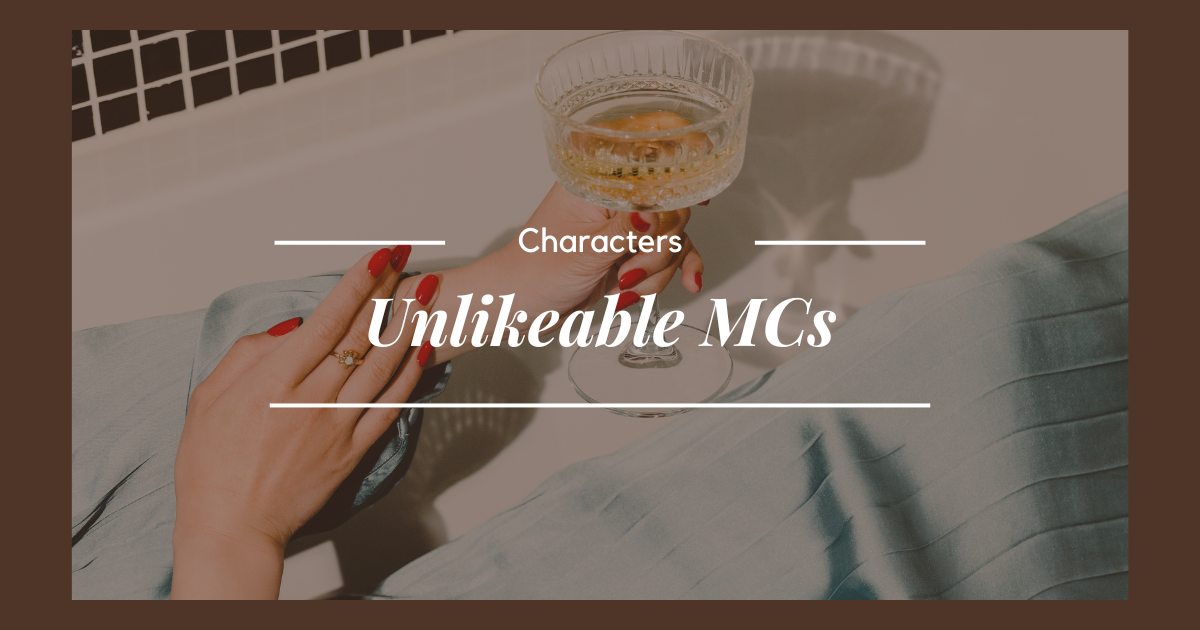A main character’s first job is to be interesting.
They don’t need to be likable, or even good, for this to be the case. A character can do bad things and still be compelling or intriguing to read about. Often, a bad person can set up a really interesting character arc in which they grow and learn to be good.
It’s why we like Zuko, and most well-written villains in general. Despite having a difficult personality, major flaws, or defining backstories, these characters may also have redeeming qualities or moments of vulnerability that warm the audience to them.
So how can we tell if a character is just poorly written?
1. They’re perfect
This can be a big reason why a lot of heroes end up being fairly boring – they’re already good, or perfect, or strong. It can lead to a Mary Sue situation if not corrected. Perfect characters are uninteresting characters.
Characters need stakes, which I discuss here.
2. They’re universally loved within their world
I talk about the difference between flawed and problematic characters in this blog, but we see something similar happen here. Basically, you can tell by the reactions of the other characters in the story.
In the real world, most people will experience disliking or even hating another person, and many will also experience being disliked by others. That’s normal, no one can be everyone’s cup of tea.
But a poorly written character doesn’t have that humbling experience. They’re going around doing their thing, and no one is stopping them. No one is arguing with them. No one is pushing them to be better or do better. In fact, everyone seems quite amused, or supportive, or otherwise happy with the main character. Unrealistically so. If someone doesn’t like or support them, it’s because that person is the villain or an opposing force in some way. Never does a friend call them out or simply disagree. If they do, obviously they have to change – never the main character.
If at no point their antics turn off the people on their side, that’s a red flag. It can feel…self-inserty. As if the author has modeled this character after themselves.
This kind of blind following only works for villains of great power, because they are literally surrounded by yes-men who are afraid to disagree, or those sucking up to earn favor. So unless our main character is a villain, this will always throw a wrench in the story.
3. Quippy darlings
Another way to tell is when the character’s entire personality boils down to their dialogue. They have little to offer the story except to be present, make quippy remarks, and look cool doing it.
The phrase, “Kill your darlings” exists for a reason. But unfortunately, these darlings are left in for the writer to dote on, even though they contribute nothing.
4. Reader apathy
An intentionally-designed unlikable character is often thought-provoking. These characters encourage us to get into their shoes, to see from the eyes of someone who we wouldn’t want to be like. It’s often a unique reading experience. Their growth can feel relatable, as well.
But poorly-written unlikable characters have the opposite effect. There’s no nuance to their story – they’re unlikable, and obliviously so. They don’t inspire thought, they encourage apathy and a lack of engagement with the story. These characters turn readers off.
So, what does this mean for us readers?
I heartily encourage the DNF when you’re not having a good time with a book. Actually, I have a whole blog post defending the value of dropping a book, which I encourage you to read if you’re hesitant to give up.
I would love to have you around! Subscribe below.







